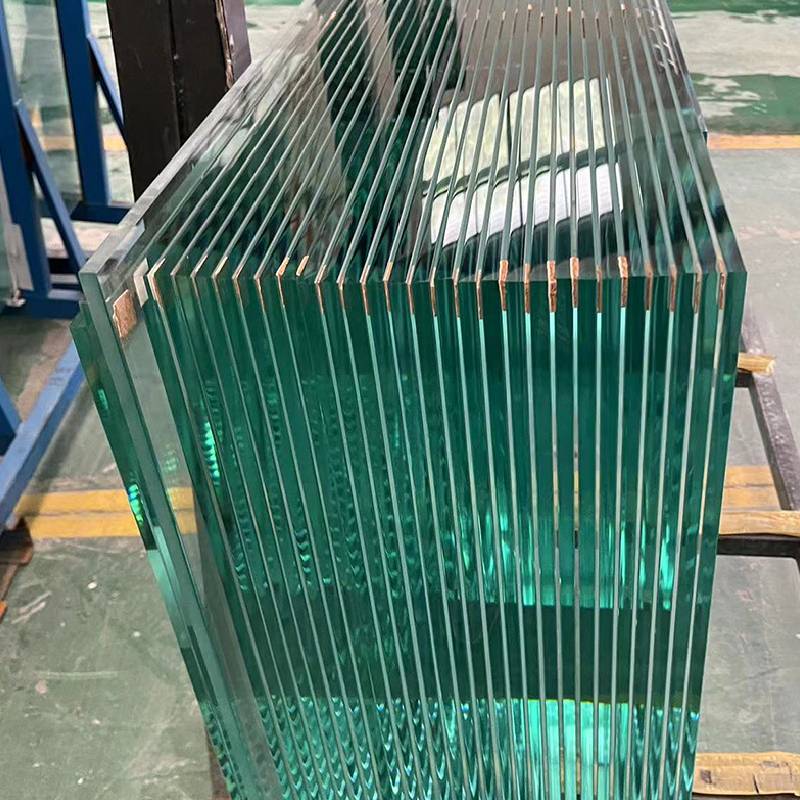The Evolution and Impact of Flat Glass Manufacturing
Flat glass manufacturing is a critical segment of the glass industry that plays a significant role in various sectors including construction, automotive, and technology. As an essential material, flat glass is utilized in windows, doors, mirrors, and screens, making it a ubiquitous presence in our daily lives. The technological advancements in this field have transformed production methods, improved glass quality, and expanded applications.
Historical Context
The history of flat glass dates back to ancient civilizations, where rudimentary forms were produced. Through the centuries, techniques evolved, leading to the introduction of sheet glass in the 17th century. However, it was not until the 20th century that large-scale flat glass manufacturing truly emerged, driven by industrialization and urbanization. The development of the float glass process by Sir Alastair Pilkington in the 1950s marked a pivotal moment. This innovative method allowed for the production of high-quality glass with uniform thickness, which revolutionized the industry.
Manufacturing Processes
Today, flat glass is primarily produced using three methods the float glass process, rolled glass process, and drawn glass process. The most common is the float glass process, where molten glass is poured onto molten tin, allowing it to spread evenly and form a flat surface. This method provides exceptional quality and clarity, essential for applications such as architectural glass and automotive windshields.
The rolled glass process, although less common today, produces textured glass by rolling molten glass into sheets. This technique is often used for decorative applications. The drawn glass process involves pulling glass upward from a molten mass, traditionally used for producing thinner sheets suitable for smaller applications.
Technological Innovations
Recent advancements in technology have dramatically enhanced the efficiency and sustainability of flat glass production. Automation and digitalization have streamlined manufacturing processes, reducing labor costs and improving precision. The integration of computer numerical control (CNC) machines has allowed for intricate designs and custom shapes, catering to the growing demand for personalized glass products.
flat glass manufacturing
Additionally, innovations in glass coatings and films have made flat glass more energy-efficient and versatile. Low-emissivity (low-E) coatings, for example, enhance thermal performance by reflecting heat while allowing light to pass through, contributing to energy conservation in buildings. Self-cleaning and anti-fogging coatings are also being developed, making maintenance easier and enhancing safety in automotive applications.
Environmental Considerations
As with many industries, environmental sustainability is a pressing concern in flat glass manufacturing. The production process is energy-intensive and generates greenhouse gas emissions. However, there have been significant strides in implementing eco-friendly practices. Many manufacturers are investing in renewable energy sources and recycling initiatives to reduce their carbon footprint.
Recycling glass, in particular, plays a crucial role in sustainable flat glass production. Utilizing cullet (recycled glass) not only decreases energy consumption but also minimizes waste. The industry aims to increase the recycling rate of glass products, thereby promoting a circular economy.
Future Directions
The future of flat glass manufacturing holds promising prospects. As the global demand for energy-efficient buildings and materials rises, manufacturers are likely to focus on developing high-performance glass products. The integration of smart technologies, such as electrochromic glass that can change its tint based on sunlight exposure, is also gaining traction. These innovations will not only improve aesthetic appeal but also contribute to energy savings and occupant comfort.
Moreover, as urbanization continues in developing countries, the demand for flat glass in construction and infrastructure projects is expected to soar. This trend will spur growth in the manufacturing sector, encouraging investments in research and development to meet the evolving needs of the market.
Conclusion
Flat glass manufacturing is a dynamic industry that reflects the intersection of tradition and innovation. Its evolution from ancient techniques to modern automated processes illustrates the importance of adaptation to meet societal needs. With ongoing technological advancements and a commitment to sustainability, the flat glass manufacturing sector is poised for continued growth and relevance in an ever-changing world. As we move forward, the role of flat glass will undoubtedly become even more integral to our built environments and daily lives.
 Afrikaans
Afrikaans  Albanian
Albanian  Amharic
Amharic  Arabic
Arabic  Armenian
Armenian  Azerbaijani
Azerbaijani  Basque
Basque  Belarusian
Belarusian  Bengali
Bengali  Bosnian
Bosnian  Bulgarian
Bulgarian  Catalan
Catalan  Cebuano
Cebuano  Corsican
Corsican  Croatian
Croatian  Czech
Czech  Danish
Danish  Dutch
Dutch  English
English  Esperanto
Esperanto  Estonian
Estonian  Finnish
Finnish  French
French  Frisian
Frisian  Galician
Galician  Georgian
Georgian  German
German  Greek
Greek  Gujarati
Gujarati  Haitian Creole
Haitian Creole  hausa
hausa  hawaiian
hawaiian  Hebrew
Hebrew  Hindi
Hindi  Miao
Miao  Hungarian
Hungarian  Icelandic
Icelandic  igbo
igbo  Indonesian
Indonesian  irish
irish  Italian
Italian  Japanese
Japanese  Javanese
Javanese  Kannada
Kannada  kazakh
kazakh  Khmer
Khmer  Rwandese
Rwandese  Korean
Korean  Kurdish
Kurdish  Kyrgyz
Kyrgyz  Lao
Lao  Latin
Latin  Latvian
Latvian  Lithuanian
Lithuanian  Luxembourgish
Luxembourgish  Macedonian
Macedonian  Malgashi
Malgashi  Malay
Malay  Malayalam
Malayalam  Maltese
Maltese  Maori
Maori  Marathi
Marathi  Mongolian
Mongolian  Myanmar
Myanmar  Nepali
Nepali  Norwegian
Norwegian  Norwegian
Norwegian  Occitan
Occitan  Pashto
Pashto  Persian
Persian  Polish
Polish  Portuguese
Portuguese  Punjabi
Punjabi  Romanian
Romanian  Russian
Russian  Samoan
Samoan  Scottish Gaelic
Scottish Gaelic  Serbian
Serbian  Sesotho
Sesotho  Shona
Shona  Sindhi
Sindhi  Sinhala
Sinhala  Slovak
Slovak  Slovenian
Slovenian  Somali
Somali  Spanish
Spanish  Sundanese
Sundanese  Swahili
Swahili  Swedish
Swedish  Tagalog
Tagalog  Tajik
Tajik  Tamil
Tamil  Tatar
Tatar  Telugu
Telugu  Thai
Thai  Turkish
Turkish  Turkmen
Turkmen  Ukrainian
Ukrainian  Urdu
Urdu  Uighur
Uighur  Uzbek
Uzbek  Vietnamese
Vietnamese  Welsh
Welsh  Bantu
Bantu  Yiddish
Yiddish  Yoruba
Yoruba  Zulu
Zulu 

